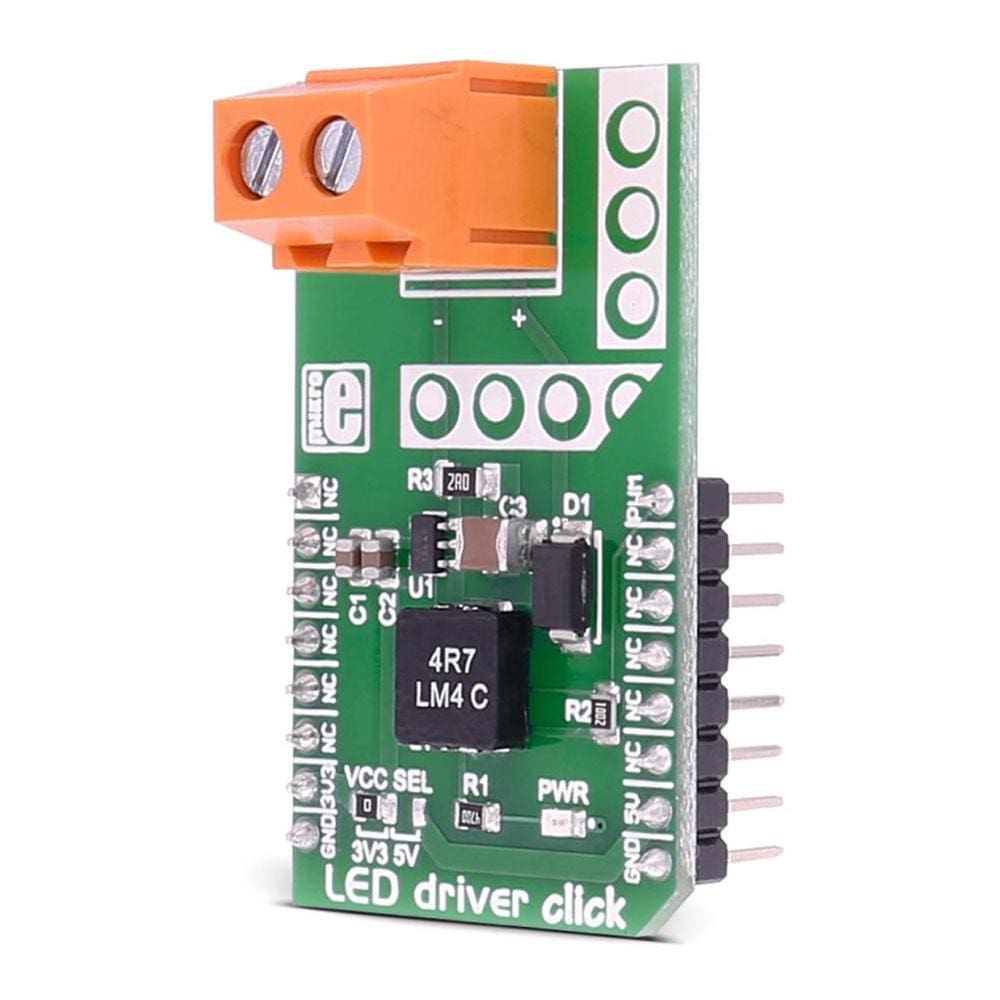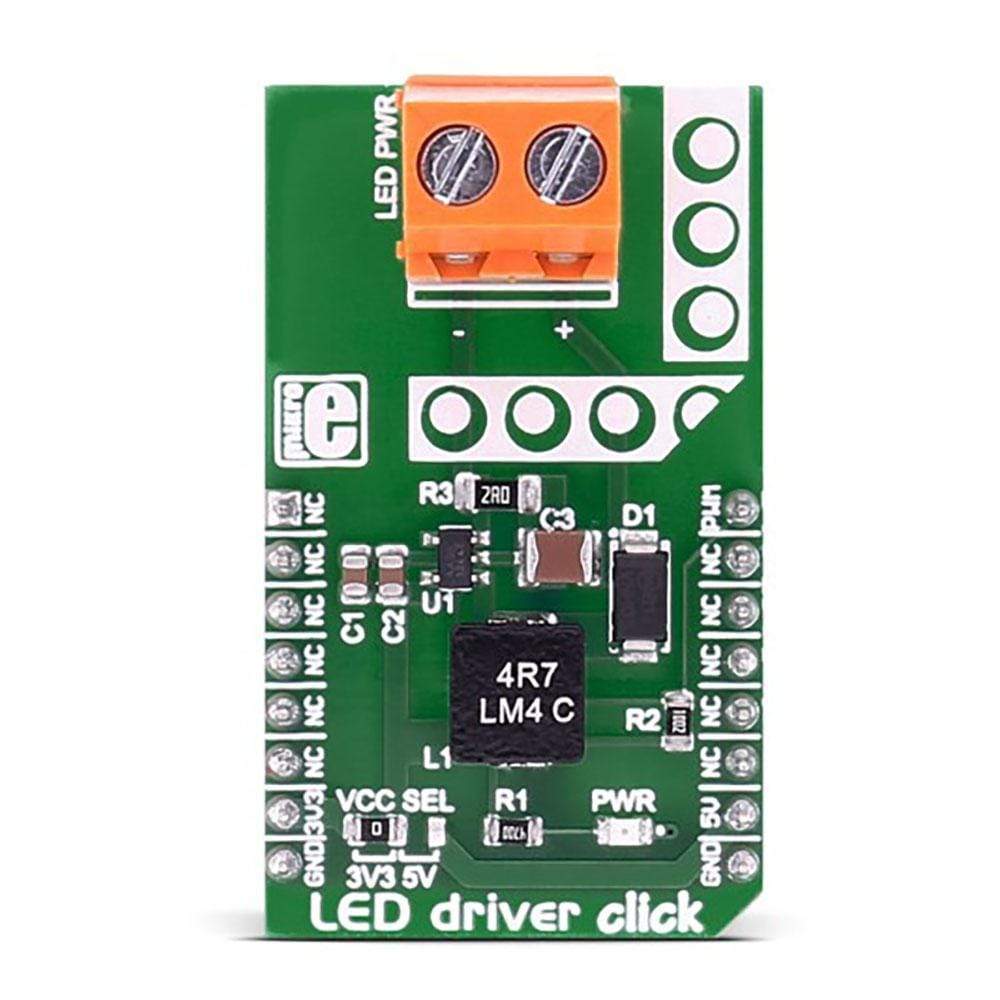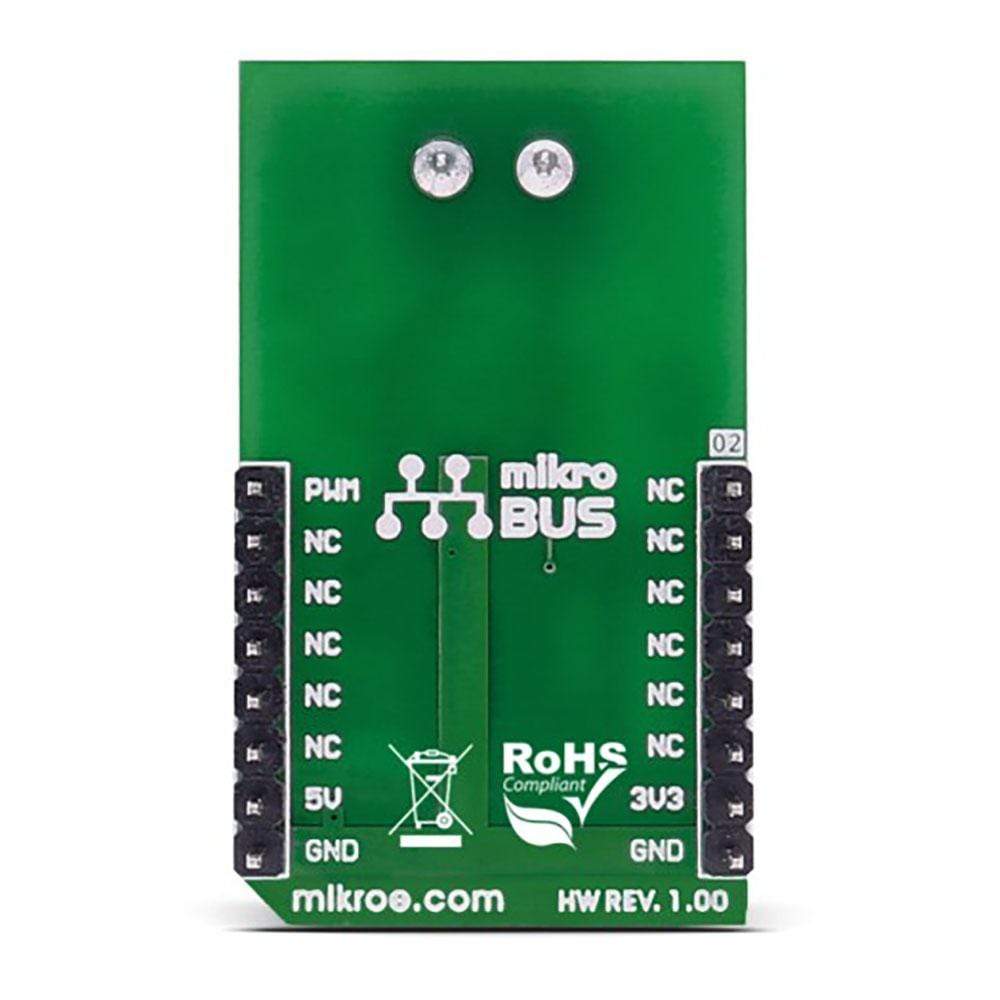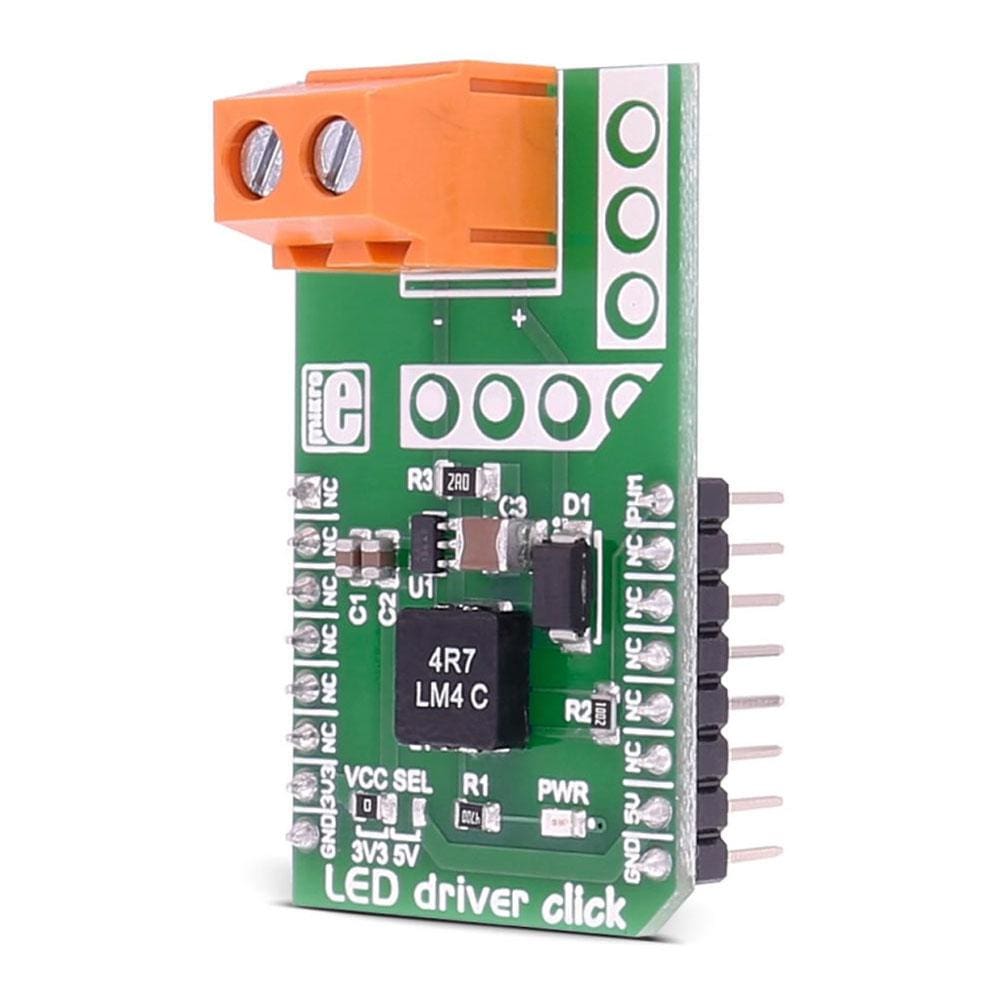
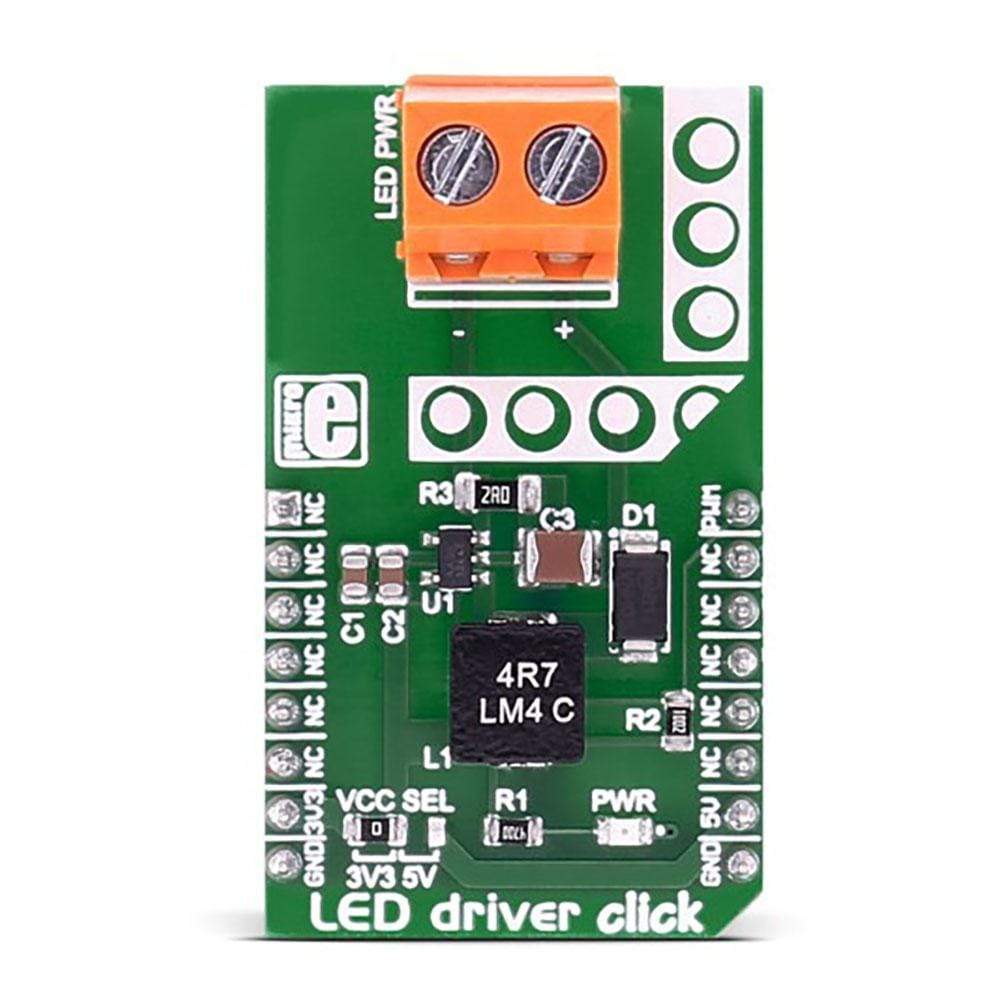
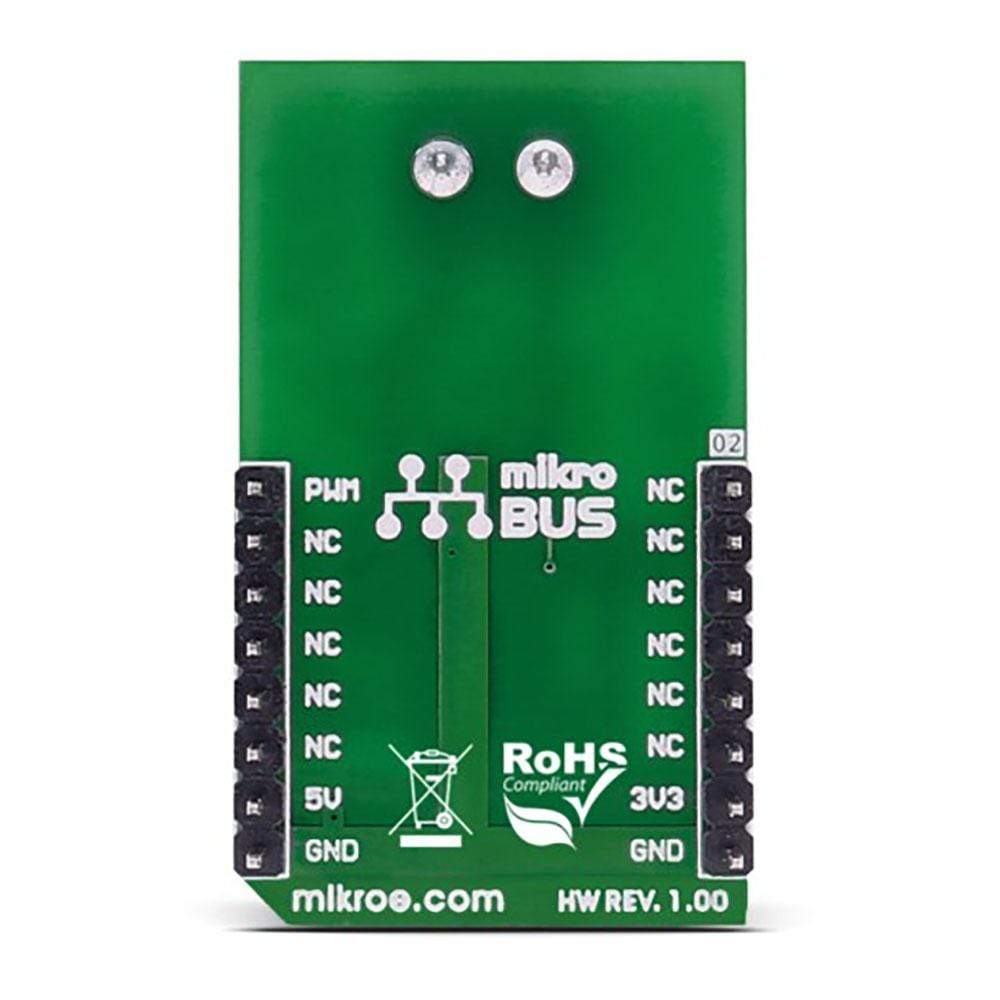
Overview
The LED Driver Click Board™ is based on the MCP1662 high-voltage step-up voltage driver from Microchip. The Click Board™ is designed to run on either 3.3V or 5V power supply. It communicates with the target microcontroller over PWM pin on the MikroBUS line.
Downloads
Das LED Driver Click Board™ basiert auf dem Hochspannungs-Aufwärtsspannungstreiber MCP1662 von Microchip. Das Click Board™ ist für den Betrieb mit 3,3 V oder 5 V Stromversorgung ausgelegt. Es kommuniziert mit dem Zielmikrocontroller über den PWM-Pin auf der MikroBUS-Leitung.
| General Information | |
|---|---|
Part Number (SKU) |
MIKROE-2676
|
Manufacturer |
|
| Physical and Mechanical | |
Weight |
0.021 kg
|
| Other | |
Country of Origin |
|
HS Code Customs Tariff code
|
|
EAN |
8606018710867
|
Warranty |
|
Frequently Asked Questions
Have a Question?
Be the first to ask a question about this.

